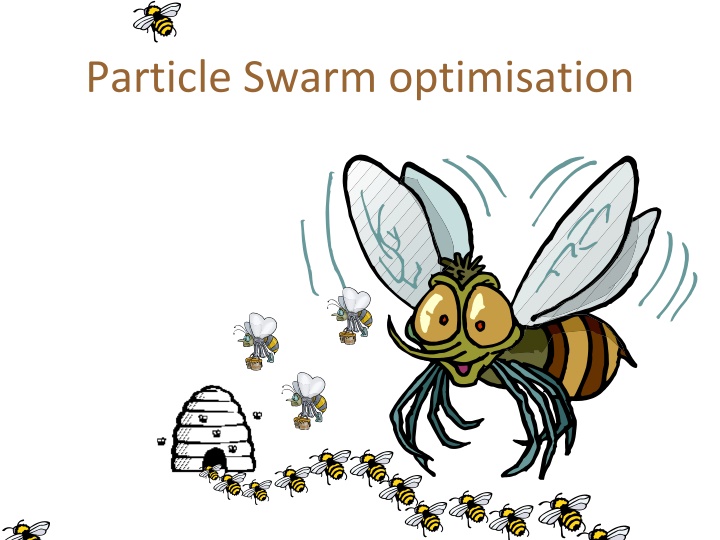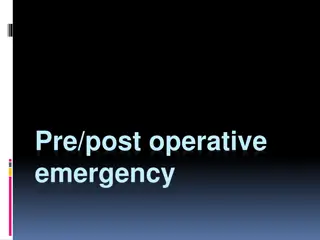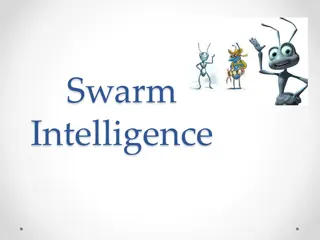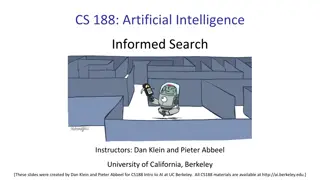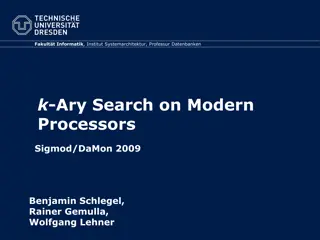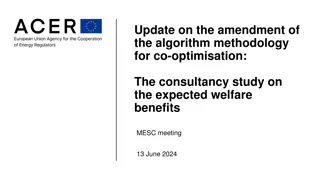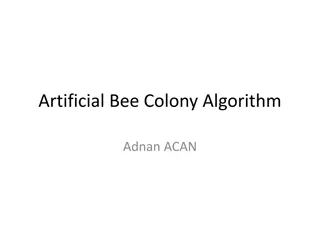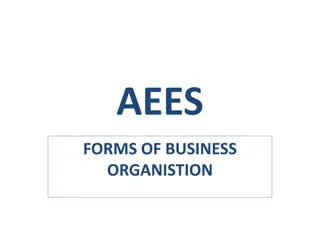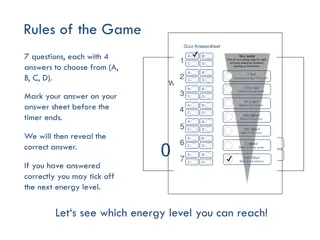Particle Swarm Optimisation: The Co-operative Search Process
A presentation on Particle Swarm Optimisation (PSO), a collaborative search algorithm where particles move towards optimal solutions by sharing information within a swarm. PSO was invented by Russ Eberhart and James Kennedy. The slides discuss the basic principles, cooperation among particles, initialization, movement process, and different types of neighbourhoods. The content emphasizes the synergy between individual and collective efforts in PSO to enhance search efficiency.
Uploaded on Feb 16, 2025 | 3 Views
Download Presentation

Please find below an Image/Link to download the presentation.
The content on the website is provided AS IS for your information and personal use only. It may not be sold, licensed, or shared on other websites without obtaining consent from the author.If you encounter any issues during the download, it is possible that the publisher has removed the file from their server.
You are allowed to download the files provided on this website for personal or commercial use, subject to the condition that they are used lawfully. All files are the property of their respective owners.
The content on the website is provided AS IS for your information and personal use only. It may not be sold, licensed, or shared on other websites without obtaining consent from the author.
E N D
Presentation Transcript
These slides adapted from a presentation by Maurice.Clerc@WriteMe.com - one of the main researchers in PSO PSO invented by Russ Eberhart (engineering Prof) and James Kennedy (social scientist) in USA
The basic idea Each particle is searching for the optimum Each particle is moving and hence has a velocity. Each particle remembers the position it was in where it had its best result so far (its personal best) But this would not be much good on its own; particles need help in figuring out where to search. Particle Swarm optimisation
The basic idea II The particles in the swarm co-operate. They exchange information about what they ve discovered in the places they have visited The co-operation is very simple. In basic PSO it is like this: A particle has a neighbourhood associated with it. A particle knows the fitnesses of those in its neighbourhood, and uses the position of the one with best fitness. This position is simply used to adjust the particle s velocity Particle Swarm optimisation
Initialization. Positions and velocities
What a particle does In each timestep, a particle has to move to a new position. It does this by adjusting its velocity. The adjustment is essentially this: The current velocity PLUS A weighted random portion in the direction of its personal best PLUS A weighted random portion in the direction of the neighbourhood best. Having worked out a new velocity, its position is simply its old position plus the new velocity. Particle Swarm optimisation
Neighbourhoods geographical social
Neighbourhoods Global
The circular neighbourhood 1 Particle 1 s 3- neighbourhood 2 8 3 7 Virtual circle 4 6 5
Particles Adjust their positions according to a ``Psychosocial compromise between what an individual is comfortable with, and what society reckons My best perf. pi Here I am! The best perf. of my neighbours x pg v
Pseudocode http://www.swarmintelligence.org/tutorials.php Equation (a) v[] = c0 *v[] + c1 * rand() * (pbest[] - present[]) + c2 * rand() * (gbest[] - present[]) (in the original method, c0=1, but many researchers now play with this parameter) Equation (b) present[] = present[] + v[] Particle Swarm optimisation
Pseudocode http://www.swarmintelligence.org/tutorials.php For each particle Initialize particle END Do For each particle Calculate fitness value If the fitness value is better than its peronal best set current value as the new pBest End Choose the particle with the best fitness value of all as gBest For each particle Calculate particle velocity according equation (a) Update particle position according equation (b) End While maximum iterations or minimum error criteria is not attained Particle Swarm optimisation
Pseudocode http://www.swarmintelligence.org/tutorials.php Particles' velocities on each dimension are clamped to a maximum velocity Vmax. If the sum of accelerations would cause the velocity on that dimension to exceed Vmax, which is a parameter specified by the user. Then the velocity on that dimension is limited to Vmax. Particle Swarm optimisation
Animated illustration Global optimum
Parameters Number of particles C1 (importance of personal best) C2 (importance of neighbourhood best) Particle Swarm optimisation
Parameters Number of particles (10 50) are reported as usually sufficient. C1 (importance of personal best) C2 (importance of neighbourhood best) Usually C1+C2 = 4. No good reason other than empiricism Vmax too low, too slow; too high, too unstable. Particle Swarm optimisation
Some functions often used for testing real-valued optimisation algorithms Griewank Rastrigin Rosenbrock
... and some typical results Optimum=0, dimension=30 Best result after 40 000 evaluations 30D function PSO Type 1" Evolutionary algo.(Angeline 98) Griewank [ 300] 0.003944 0.4033 Rastrigin [ 5] 82.95618 46.4689 Rosenbrock [ 10] 50.193877 1610.359
Adaptive swarm size I try to kill myself There has been enough improvement although I'm the worst I try to generate a new particle I'm the best but there has been not enough improvement
Adaptive coefficients rand(0 b)(p-x) v The better I am, the more I follow my own way The better is my best neighbour, the more I tend to go towards him
How and when should an excellent algorithm terminate?
How and when should an excellent algorithm terminate? Like this
